This month, we share the latest trend before highlighting current challenges, and we also explain Maersk’s latest solutions to help you keep cargo moving.
Market Trend
Global manufacturing showed signs of firming in December according to global Purchasing Manager’s Index (PMI) figures released in January indicating that manufacturing sentiment remained upbeat in the fourth quarter despite a raft of challenges including delivery delays and the continuing threat from COVID-19. China’s manufacturing PMI nudged higher in December for the second straight month to hit 50.3 showing the economy was in expansion mode ahead of the Chinese New Year holiday in February, a GDP increase for China during the fourth quarter of 2021, 4% up from the previous year, whilst manufacturing in China also grew in tandem, up 4.3% the previous year.
This optimism is shown in forecasts for containerized cargo volumes this year which are projected to grow, despite risks to global trade including geopolitical tensions. In 2021, our estimated global container volume growth was 7.8%, and this reflects the ongoing growth in global GDP.
But challenges remain. Deutsche Bank’s congestion index points to ongoing pressures and bottlenecks in the broader supply chain with port congestion and inland transportation delays among the key issues, while freight rates are expected to remain elevated.
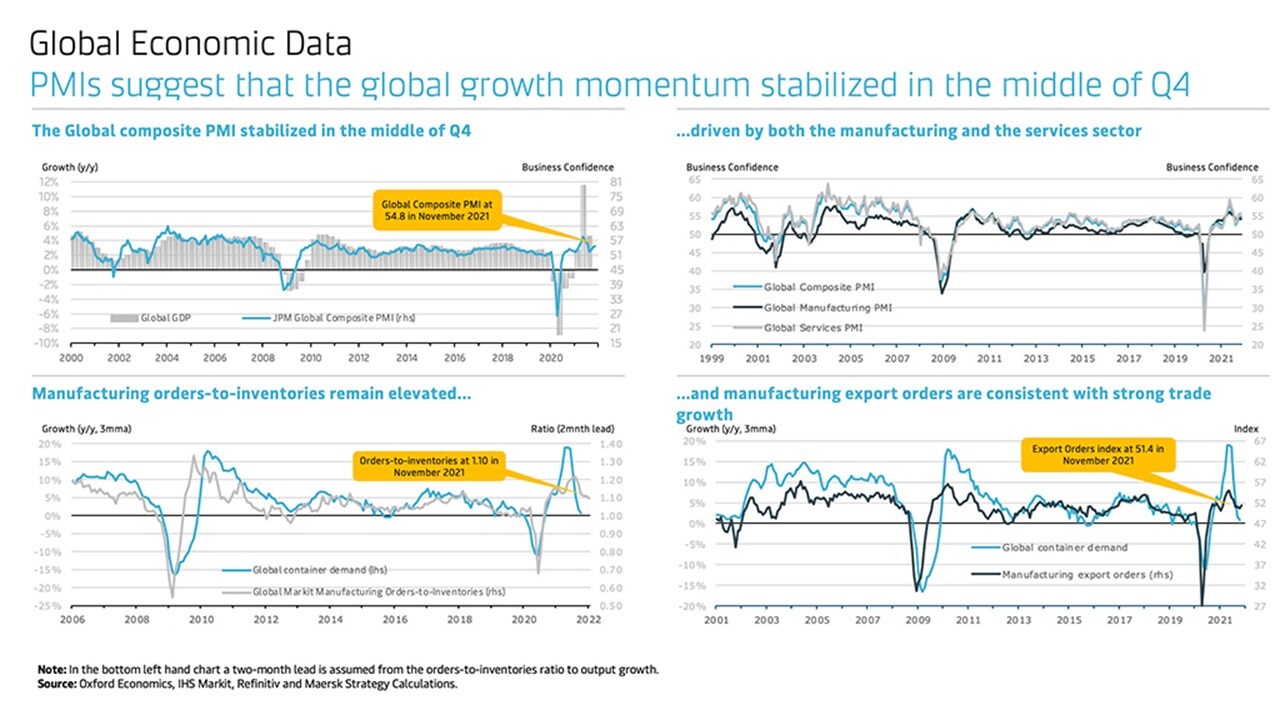
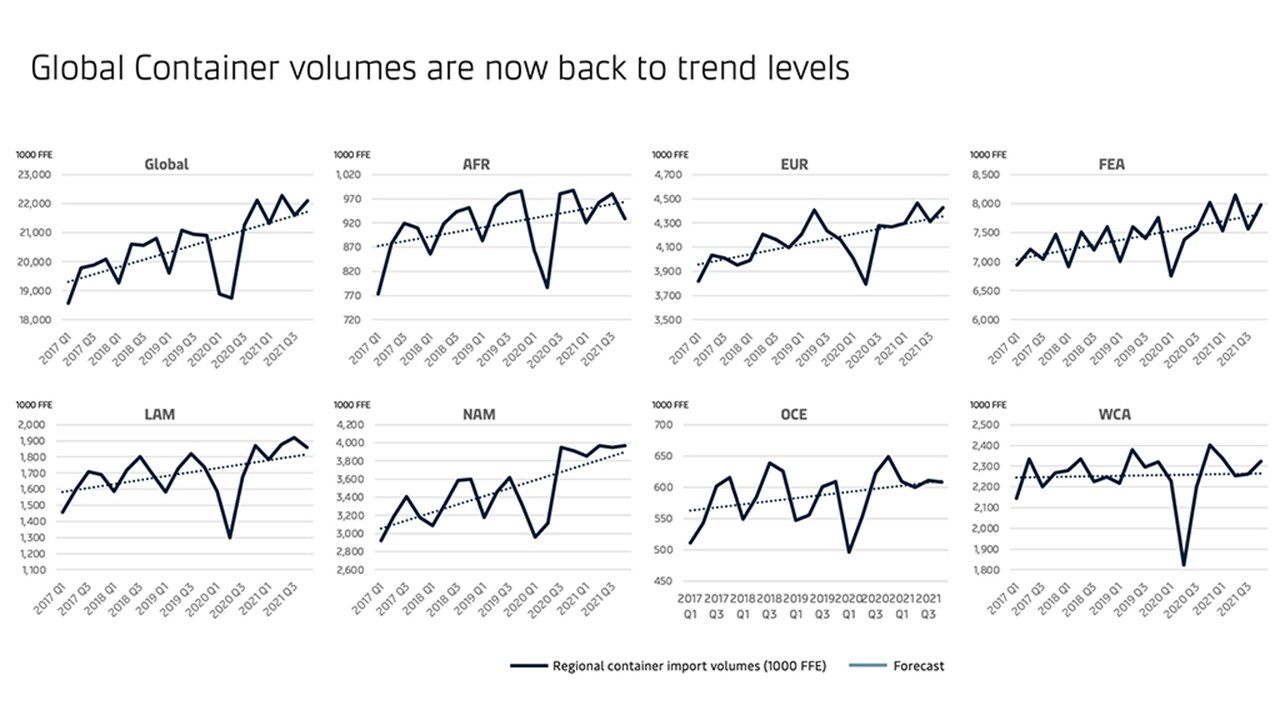
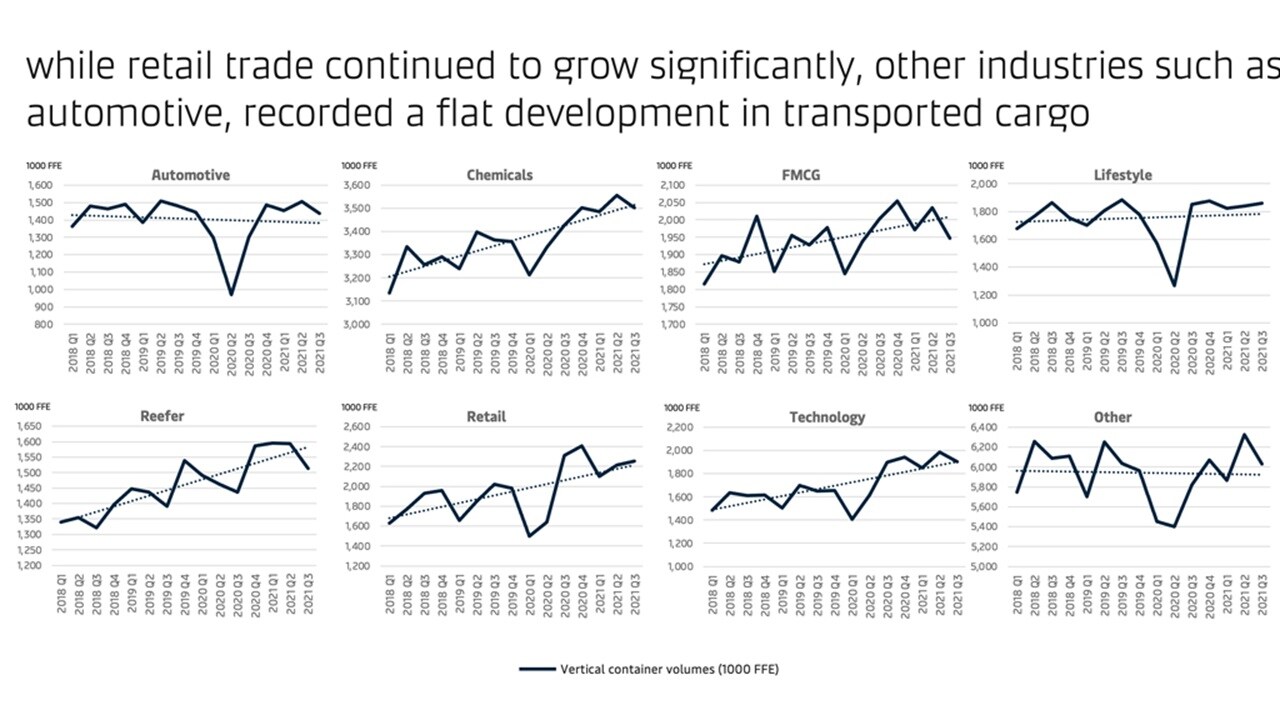
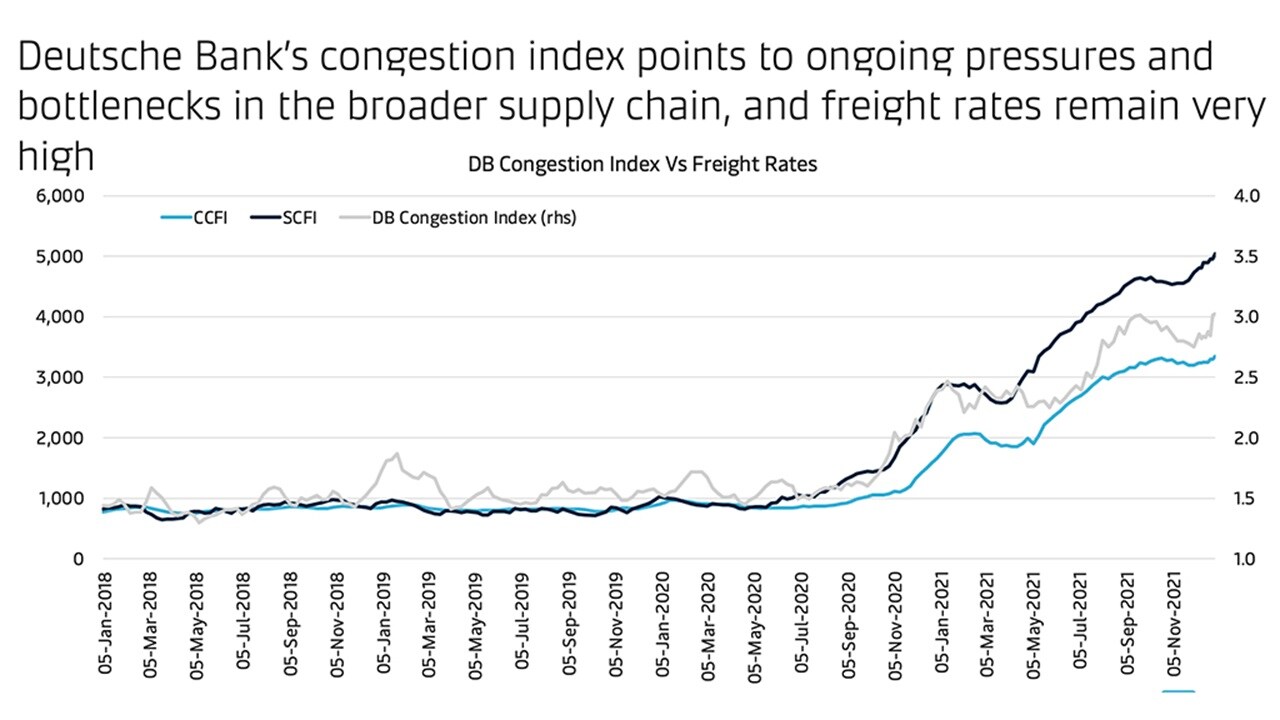
Trending Topic
Maersk intending to acquire Hong Kong’s LF Logistics. Maersk has announced its intention to complete the acquisition of Hong Kong-based LF Logistics later this year in a deal that will significantly expand Maersk’s warehousing and distribution network. The acquisition is a further step in Maersk’s ambition to become a truly global integrated logistics company as it moves away from being just one of the world’s largest container shipping lines.
The acquisition of LF Logistics is an important and truly strategic milestone on our journey to become the global integrator of container logistics; a global logistics company that provides digitally-enabled end-to-end logistics solutions based on control of critical assets. With the acquisition of LF Logistics, we add critical capabilities in the Asia Pacific to support our customer's long-term growth in the Asia Pacific as well as capabilities and technology we can scale in our contract logistics business globally.
Maersk will add 223 warehouses to its existing portfolio, bringing the total number of facilities to 549 globally, spread across a total of 9.5 million square meters.
Maersk will also enter into a strategic partnership with Hong Kong-headquartered trading company Li & Fung to develop logistics solutions, as part of the acquisition. Li & Fung owns 78.3% of LF Logistics with the remaining 21.7% held by Temasek Holdings, the Singapore government’s investment vehicle.
The planned acquisition of LF Logistics is the latest in a series of deals since the middle of last year which also includes two e-commerce logistics companies - Visible Supply Chain Management and B2C Europe Holding – in the US and Europe.
COVID-19 flareups challenge Greater China supply chains. Recurrent COVID-19 flareups in the Greater China region are continuing to disrupt wider supply chains as the country tackles the virus. Even though container loading and discharge operations at ports and terminals have remained normal despite cases this month in Ningbo, Tianjin, Shenzhen, Dalian and Guangzhou, district-level lockdowns and mass testing have led to warehouse closures and trucker shortages.
In Ningbo, transport and warehousing operations are operating normally after a cluster of cases in early January in the city’s Beilun district led to extensive trucker delays as drivers had to undergo testing and quarantine before being allowed into Beilun’s three container terminals. In Shenzhen, there are gate entry restrictions at the city’s Shekou terminal as health officials carry out testing after cases in Shenzhen. In Beijing, several cases of the highly transmittable Omicron variant of COVID-19 are putting the city on alert ahead of the Beijing Winter Olympics due to start on February 4.
The pandemic is also impacting port operations in the global wider Maersk network with Omicron particularly creating acute staff shortages at ports and terminals even through the facilities remain operational. For details of the latest operational constraints click here: Operational constraints in key regions | Maersk
Ocean Update
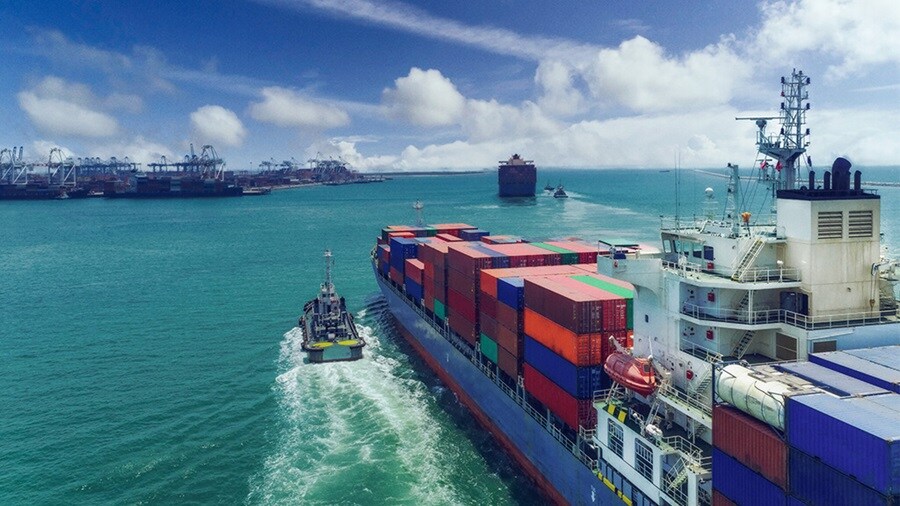
- Equipment and space to remain under pressure: We expect to see a tight supply of shipping space through Chinese New Year although this could ease during weeks 5-6-7 (February 1-20). We will use some of the time during the holiday to reset some of our services and restore schedule reliability. We do not intend a to run significant blanking programme. Equipment will be tight in specific locations and we urge shippers to consider using 20ft containers and non-operating reefers (NOR) in place of 40ft boxes.
- Quick recovery after Lunar New Year: We anticipate a quick rebound after CNY on most trades as demand remains strong and capacity is tied up due to congestion delays at ports in North America and Europe.
Unfortunately, this situation is likely to continue for some time particularly now that Omicron has cut workforce numbers in some locations by up to 25%. Our schedule reliability continues to be the best in class, although it is still unacceptable for us. We will continue to seek ways to improve reliability and service levels.
- Key Market Outlook across trades lanes
| Trade Lane | Market Outlook |
|---|---|
|
Trade Lane
Asia to North Europe
|
Market Outlook
We will assist our customers by deploying gap loaders where necessary. In case we do see low utilization on vessels, we will use the opportunity to recover schedules (e.g. use vessels to fill up gaps in the network). We have initiated a big voyage number reset (CA online) which means that as of WK7, commitment weeks and voyage weeks are aligned across the board.
|
|
Trade Lane
Asia to Mediterranean
|
Market Outlook
To mitigate the capacity gap due to sliding and delays, we have deployed 3 gap loaders and will continuously do internal transfer or call for a gap loader to provide earlier delivery. AE12 and AE15 are doing structurally port omissions to limit the impact of berthing delay. We have also started to collect the post Lunar New Year pipeline and are taking Lunar New Year slack to push for schedule recovery by sliding.
|
|
Trade Lane
Asia to North America
|
Market Outlook
Capacity loss due to port congestions is expected to continue. To mitigate the impact of missing sailings, we have called 4 gap loaders in Dec and 5 gap loaders in Jan to cover pre-Lunar New Year demand from customers. North American ports are not likely to improve soon, we suggest customers increase lead-time between ETA and actual departure.
|
|
Trade Lane
Asia to Latin America
|
Market Outlook
No blanking plan for Latin America after Lunar New Year, so capacity is expected to remain unchanged. Service Reliability has also improved, with fewer port omissions, so demand is expected to resume from Wk7. However, unexpected COVID surges might constrain logistic supply and capacity.
|
|
Trade Lane
Asia to West Central Asia
|
Market Outlook
FI4 service to the east coast of India sailed fortnightly in January and will resume weekly coverage from Feb. Meanwhile, the ABX service launched in late Dec 2021, providing direct service from Shanghai/Shekou to Jebal Ali. Overall demand has been impacted by the Lunar New Year holidays, but we expect levels to resume from Wk07.
|
|
Trade Lane
Asia to Africa
|
Market Outlook
West Africa: Overall demand is strong pre-Lunar New Year and capacity remains tight especially into the Northern range of Africa. Gap loaders have been deployed to cater to Ramadan. Moreover, Maersk has started offering direct service from Qingdao to central Africa in order to provide more reliable service for the Northern China market.
East and South Africa: Lunar New Year rush is slower than expected, but the post-Lunar New Year blanking and vessel schedule recovery plan has been confirmed. Maersk is aiming to improve service delivery. NOR will be the key driver from Feb onwards to Durban and Cape Town. |
|
Trade Lane
Asia to Oceania
|
Market Outlook
Dragon service to be blanked in Week 6 due to Lunar New Year holidays and to reset vessel schedule to offset accumulated waiting times at load and discharge ports. Sailing will resume in Week 7. Slide sailings may continue if port omissions and changes in rotations are not able to mitigate increased waiting times.
|
|
Trade Lane
Oceania Export
|
Market Outlook
*OCE capacity remains available to GCA as customers return from the Christmas break. Strong agricultural demand in Australia continues to expand and is expected to do so for the remainder of Q1-2 as grain exports continue and a large cotton crop is expected. * Preparations continue for Lunar New Year with export space open for exports to Greater China Area. Maersk launched the Polaris service in January 2022 connecting Brisbane, Australia to New Zealand ports Lyttelton and Timaru. In Q1 we expect additional space to be available from Australia to New Zealand.
* All 20 equipment types, especially reefers, remain tight. Customers are encouraged to use 40EQR where possible. Further, schedule reliability remains low in the OCE to ASI trade, with the market performance of 17.1% in OCT/NOV. Regardless, Maersk's schedule reliability remains significantly ahead of the market performance, with the Southern Star service being the most reliable in Oceania to Asia trade at 76.5% in OCT/NOV according to Sea-Intelligence DEC report. |
|
Trade Lane
Asia Import
|
Market Outlook
*Continuous vessel delays and port congestions are expected. Maersk to further pursue 40' laden and empty containers back to Asia to support equipment supply in Asia. Furthermore, additional free port storage days will be offered to Hong Kong and Nansha during Lunar New Year. Value Added Services (ECO delivery, Flex Hub, Maersk Accelerate, Sales on water) are available for customers' choice and can be discussed in ocean contracts negotiations.
|
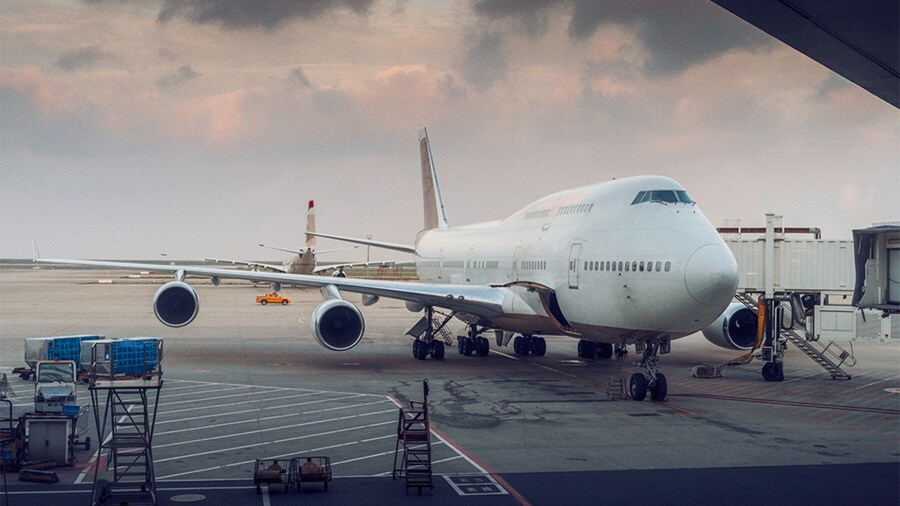
Air Update
- Greater China: Tougher COVID-19 restrictions and preparations for the Beijing Winter Olympics are creating a challenging environment for airfreight shipments just as shippers are in the pre-Chinese New Year peak season. Hong Kong has cancelled many passenger flights, while Cathay Pacific has cut its air cargo flight schedule to around 20% of normal in Q1. In mainland China, flight operations have stabilized although its COVID-19 policy is likely to affect shipments. COVID test kits to both Europe and North America remain a key volume driver in the market, moving mostly by dedicated charter service.
- Indonesia: Cargo backlogs are expected due to the Lunar New Year holiday, while space is already tight. Omicron cases could impact ground handling activities and cause delays. Cargo shipments to the US need advance booking of 5-7 days. Air cargo rates will probably increase until February due to the Lunar New Year.
- Vietnam, Cambodia, Myanmar: Capacity constraints may worsen due to the fast spreading Omicron variant. Demand is likely to ease during the Lunar New Year but it is likely rebound from mid-February due to limited air cargo capacity in the market.
- Japan: Airlines are expected to operate 253 freighter flights a week from Japan in January, the same number as December. That comes as Kansai and Fukuoka have seen an increase in air cargo volumes. Kansai airport saw international cargo volumes rise 15.3% last year, According to preliminary figures from Osaka Customs.
- Oceania: We are experiencing delays of up to 5 days for inbound air cargo into some Sydney and Melbourne terminals due to a reduced workforce because COVID-19. of current Covid situation. Capacity on the Trans-Tasman route between Australia and New Zealand remains tight, but we have access to capacity with our partner Air Carriers.
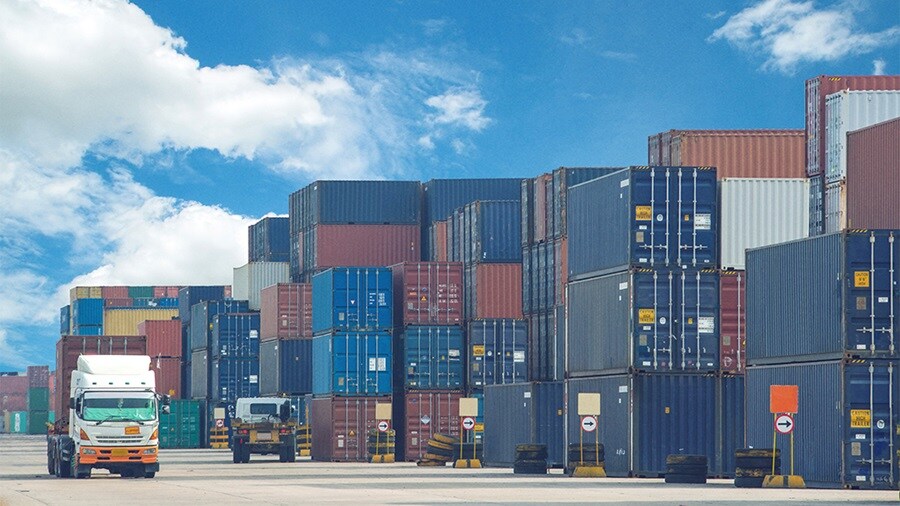
Inland Services Update
- Greater China: Overall capacity is tight all modes of transportation in Greater China as a result of the approach of the CNY holiday. Truck movements are heavily dependent on prevailing local pandemic policies which can potentially add uncertainty to landside operations. Planning ahead is crucial for customer to ensure sufficient capacity is available. Barge solutions are also available for our customers.
- Japan: Demand for trucking services from Yokohama to Tokyo is expected to surge 50% due to restrictions at Tokyo port, tightening available capacity. Around 900 containers a week are forecast to be transported by road, up from the current 600 boxes a week.
- Vietnam, Cambodia, Myanmar: Demand for cross-border rail freight between Vietnam and China is expected to soar due to congestion at road crossings. But rail services are unpredictable due to cargo backlogs at Pingxiang. There is also growing interest in intercontinental rail services between Vietnam and Europe especially if transit times are reduced following service improvements in March.
- Oceania: We continue to offer our Maersk Connect service to support port delays in both Australia and New Zealand. Warehousing is facing multiple challenges including worker shortages due to COVID-19 and capacity constraints which is increasing storage costs. Our facilities offer an immediate and agile solution for storage, fulfilment, deconsolidation and DC bypass requirements to ease capacity issues.
- Indonesia: Inland export demand is trending up for the next three months due to pre-Ramadan seasonality. Demand is also supported by an improving equipment situation with 20ft containers widely available. Trucking capacity is sufficient to meet anticipated high demand in the coming months.
Major Port Update
Major ports update (Vessel waiting time indicator)
| Area | Less than 1 day | 1-3 days | More than 3 days |
|---|---|---|---|
|
Area
APA Ports
|
Less than 1 day
Qingdao, Nansha, Xiamen, Lyttelton, Tauranga, Singapore, Tanjung Pelepas
|
1-3 days
Busan, Shanghai, Ningbo, Shekou, Yantian, Port Klang, Hong Kong
|
More than 3 days
Melbourne, Sydney, Auckland
|
|
Area
Rest of World
|
Less than 1 day
Balboa, Lazaro Cardenas, Buenaventura, Santos, Itajai, Tin Can
|
1-3 days
Antwerp, Bremerhaven, Rotterdam, Newark, Savannah, Baltimore, Miami, Tema
|
More than 3 days
Felixstowe, Long Beach, Los Angeles, Oakland, Vancouver, Seattle, Prince Rupert, Charleston, Houston, Apapa, Onne, Durban, Cape Town, Dar Es Salaam
|
Remark: Numbers are dynamic and subject to change.
- Africa: Nacala has been suspended on the M-Express and shippers are advised to transfer cargo to other Mozambique ports
- Asia: Terminals are busy and running at high density although delays are low. Trucking services are suspended in the Jinnan district of Tianjin due to COVID-19 lockdowns. We suggest customers check with our Customer Experience team about the feasibility of changing port of loading/discharge due to possible delays in Tianjin.
- Europe: There is widespread congestion and yard density is at critical levels at multiple ports. Felixstowe is the most severe where we are experiencing wait times of 7-10 days. Most other ports have a waiting time of 2-4 days. In the Mediterranean, Israel is closed due to operational restrictions. Koper, Rijeka and Trieste are also restricted due to bottlenecks.
- Latin America: San Antonio is congested because of the impact from COVID-19. San Juan and feeders at Rio Haina have capacity limitations. Ushuaia and Asuncion feeders have limited capacity due to transhipment constraints.
- Oceania: Increasing numbers of COVID-19 cases in Australia are adversely affecting the supply chain with port and trucking operations especially impacted due to the reduction in workforce numbers. We are experiencing additional vessel waiting times and truck shortages.
- Sri Lanka: Colombo port is facing delays due to high yard density and bad weather.
For more information, please contact:
无论您需要什么,我们都可以随时为您提供帮助
I agree to receive logistics related news and marketing updates by email, phone, messaging services (e.g. WhatsApp) and other digital platforms, including but not limited to social media (e.g., LinkedIn) from A. P. Moller-Maersk and its affiliated companies (see latest company overview). I understand that I can opt out of such Maersk communications at any time by clicking the unsubscribe link. To see how we use your personal data, please read our Privacy Notification.
By completing this form, you confirm that you agree to the use of your personal data by Maersk as described in our Privacy Notification.


